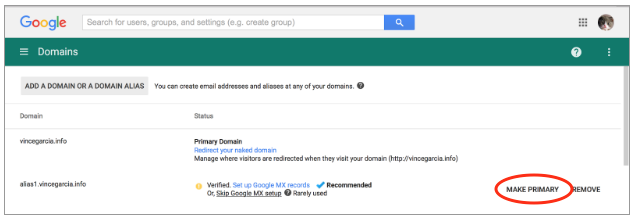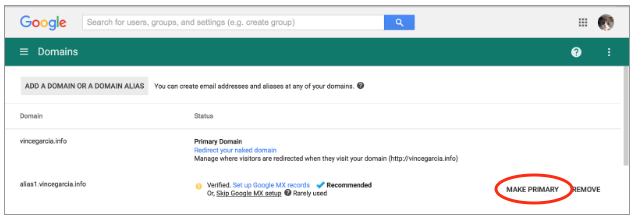Hey there! So, you’re wondering if you can change your domain name on Google? Well, let me tell you, my friend, you’ve come to the right place. Changing your domain name can be a big decision, and it’s important to understand the ins and outs before you make any moves. But don’t worry, I’ve got you covered with all the information you need to know.
Now, let’s address the elephant in the room. Can you change your domain name on Google? The short answer is yes, you can. However, it’s not as simple as waving a magic wand and poof! Your old domain name is gone and the new one takes its place. There are a few steps you need to follow to ensure a smooth transition. So, grab a cup of coffee, sit back, and let’s dive into the wonderful world of domain name changes on Google. Trust me, it’s not as daunting as it sounds!

Can I Change My Domain Name on Google?
Changing your domain name on Google can be a significant decision for your online presence. Whether you’re rebranding your business, optimizing for search engine rankings, or simply looking for a fresh start, it’s important to understand the process and implications of changing your domain name. In this article, we will explore the steps involved in changing your domain name on Google and provide you with valuable insights to ensure a smooth transition.
Understanding the Importance of Your Domain Name
Your domain name is not just a web address; it is the digital representation of your brand and identity. It plays a crucial role in establishing your online presence and attracting visitors to your website. A well-chosen domain name can make a lasting impression and help you stand out in a crowded online marketplace. However, there may come a time when you need to change your domain name, and understanding the implications of this decision is vital.
When changing your domain name on Google, it’s important to consider the potential impact on your search engine rankings, website traffic, and overall brand recognition. A poorly executed domain name change can lead to a loss of organic traffic and confusion among your audience. Therefore, it’s essential to approach this process strategically and follow best practices to minimize any negative consequences.
The Process of Changing Your Domain Name on Google
Changing your domain name on Google involves several steps to ensure a seamless transition. Here’s a breakdown of the process:
1. Research and Planning: Before making any changes, conduct thorough research to understand the potential impact on your website’s visibility and traffic. Consider factors such as search volume, keyword competition, and existing backlinks. Develop a comprehensive plan that outlines the necessary steps to mitigate any negative effects.
2. Choose a New Domain Name: Selecting a new domain name requires careful consideration. It should align with your brand identity, be easy to remember and spell, and ideally incorporate relevant keywords. Conduct a domain name availability search to ensure your chosen name is not already in use.
3. Purchase and Set Up the New Domain: Once you’ve chosen a new domain name, register it with a reputable domain registrar. Ensure that the new domain is properly set up and configured to point to your website. This typically involves updating domain name system (DNS) records.
4. Create 301 Redirects: To preserve your website’s search engine rankings and redirect traffic from the old domain to the new one, implement 301 redirects. This tells search engines that your content has permanently moved to a new location.
5. Update Internal Links: Review and update all internal links on your website to reflect the new domain name. This includes updating links within your content, navigation menus, and any other areas where internal links are present.
6. Notify External Sources: Inform external sources, such as social media platforms, business directories, and online communities, about your domain name change. Update your profile information and ensure that any links pointing to your website are updated to the new domain.
7. Monitor and Optimize: After the domain name change, closely monitor your website’s performance, search engine rankings, and traffic. Make any necessary adjustments and continue to optimize your website for optimal visibility and user experience.
By following these steps and best practices, you can change your domain name on Google without negatively impacting your online presence. However, it’s important to note that search engine rankings may fluctuate initially, and it may take some time for your website to regain its previous visibility.
Benefits of Changing Your Domain Name
While changing your domain name on Google may seem like a daunting task, it can bring several benefits to your online presence. Here are some advantages to consider:
1. Branding Opportunities: Changing your domain name provides an opportunity to rebrand your business and align it with your current goals and target audience. A new domain name can better reflect your brand identity and values, helping you establish a stronger online presence.
2. Improved Search Engine Optimization (SEO): By selecting a domain name that incorporates relevant keywords, you can enhance your website’s visibility in search engine results. This can lead to increased organic traffic and improved rankings for targeted keywords.
3. Enhanced User Experience: A fresh domain name can provide a better user experience, making it easier for visitors to remember and find your website. A memorable and intuitive domain name can also contribute to increased brand recognition and customer loyalty.
4. Increased Marketing Opportunities: Changing your domain name opens up new marketing opportunities. You can launch targeted campaigns to promote your new brand or leverage the change as a newsworthy event to attract media attention and generate buzz.
Tips for a Successful Domain Name Change
To ensure a successful domain name change, keep the following tips in mind:
1. Plan and Prepare: Thoroughly research and plan your domain name change to minimize any negative impact on your website’s visibility and traffic. Consider all aspects, from search engine rankings to user experience, and develop a comprehensive strategy.
2. Communicate the Change: Inform your audience, customers, and stakeholders about the domain name change. Send out email notifications, update your social media profiles, and publish a blog post explaining the reasons behind the change.
3. Preserve SEO Value: Implement 301 redirects to preserve your website’s search engine rankings and redirect traffic from the old domain to the new one. Ensure that all internal and external links are updated to reflect the new domain.
4. Monitor and Adjust: After the domain name change, closely monitor your website’s performance and make any necessary adjustments. Continuously optimize your website for search engines and user experience to maintain and enhance your online presence.
In conclusion, changing your domain name on Google can be a strategic move to improve your online presence, branding, and search engine visibility. By following best practices and implementing a comprehensive plan, you can successfully navigate the process and reap the benefits that come with a new domain name. Remember to carefully consider the implications and take the necessary steps to ensure a seamless transition.
Key Takeaways: Can I Change My Domain Name on Google?
- Yes, you can change your domain name on Google.
- Changing your domain name can affect your website’s SEO.
- It’s important to plan and prepare before changing your domain name.
- Inform search engines and update your website’s links after changing the domain name.
- Consider the impact on your branding and inform your audience about the change.
Frequently Asked Questions
When it comes to managing your website, changing your domain name on Google might be a task you need to undertake. Here are some common questions and answers to guide you through the process.
Can I change my domain name on Google?
Yes, it is possible to change your domain name on Google. However, it is important to note that changing your domain name can have consequences for your website’s SEO and traffic. It is recommended to carefully consider the impact and plan the change accordingly.
Before making any changes, it is advisable to consult with an SEO expert or web developer who can guide you through the process and ensure that your website’s visibility and rankings are not negatively affected.
What are the steps to change my domain name on Google?
Changing your domain name on Google involves several steps:
1. Choose a new domain name: Select a new domain name that aligns with your brand and business goals.
2. Purchase the new domain: Register the new domain name with a domain registrar of your choice.
3. Update your website: Update all references to the old domain name on your website, including links, URLs, and email addresses.
4. Redirect old URLs: Set up 301 redirects from the old domain to the new domain to preserve SEO value and ensure a smooth transition for visitors.
5. Update Google Search Console: Add the new domain to your Google Search Console and submit a sitemap to help Google discover and index your new URLs.
6. Update other online platforms: Update your domain name on other online platforms where your website is listed, such as social media profiles and online directories.
Will changing my domain name affect my SEO?
Yes, changing your domain name can potentially impact your website’s SEO. When you change your domain, search engines like Google need to reindex your website and adjust their rankings accordingly.
To minimize the negative impact on SEO, it is crucial to set up proper redirects from the old domain to the new domain. Implementing 301 redirects will help preserve the SEO value of your old URLs and direct visitors to the corresponding pages on the new domain.
Additionally, it is important to update your website’s internal links, meta tags, and other SEO elements to reflect the new domain name. This will ensure that search engines can accurately crawl and index your website under the new domain.
How long does it take for Google to recognize the domain name change?
The time it takes for Google to recognize a domain name change can vary. In some cases, it can take a few days for Google to reindex your website under the new domain. However, it is important to note that it may take longer for the changes to fully propagate and for your website to regain its previous rankings.
During this transition period, it is crucial to monitor your website’s performance and rankings closely. If you notice any significant drops in traffic or rankings, it may be necessary to further optimize your website and consult with an SEO professional for guidance.
Can I change my domain name without losing my website’s ranking?
Changing your domain name can potentially lead to a temporary loss in rankings and traffic. However, with proper planning and implementation, you can minimize the impact and expedite the recovery process.
By following best practices such as setting up 301 redirects, updating SEO elements, and notifying search engines of the change, you can increase the chances of preserving your website’s ranking and minimizing any negative effects on SEO.
It is important to note that immediate recovery may not always be possible, as search engines need time to reindex your website under the new domain. Patience, monitoring, and continuous optimization are key during this transition period.
How to Change Domain Nameservers (DNS) in Google Domains
Final Thought: Can I Change My Domain Name on Google?
So, you’re wondering if it’s possible to change your domain name on Google? The answer is yes, you can change your domain name on Google, but it’s not as straightforward as you might think. While Google doesn’t have a specific feature for changing domain names, there are steps you can take to make the transition smoother.
Firstly, it’s important to understand that changing your domain name can have an impact on your SEO rankings. When you change your domain name, you essentially start from scratch in terms of SEO. However, by following some best practices, you can mitigate the potential negative effects.
One crucial step is to set up proper redirects from your old domain to the new one. This ensures that any existing links to your old domain will lead visitors to your new domain. Alongside redirects, you should also update your sitemap and submit it to Google Search Console to help Google recognize and index your new domain. Additionally, don’t forget to update your internal links, external links, and any backlinks you have. By taking these steps and being patient, you can regain and even improve your SEO rankings over time.
Remember, changing your domain name is a big decision that requires careful consideration. It’s important to weigh the potential benefits against the potential risks and challenges. If you decide to proceed, make sure to plan and execute the transition meticulously, following SEO best practices to minimize any negative impact. With the right strategy and patience, you can successfully change your domain name on Google and continue to thrive online.






